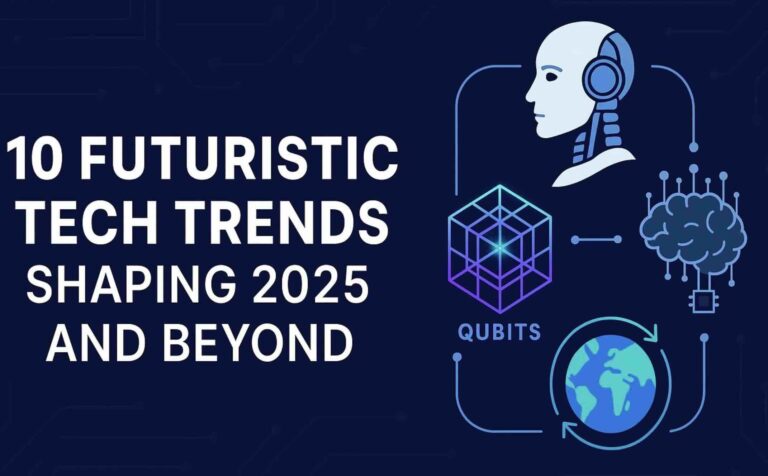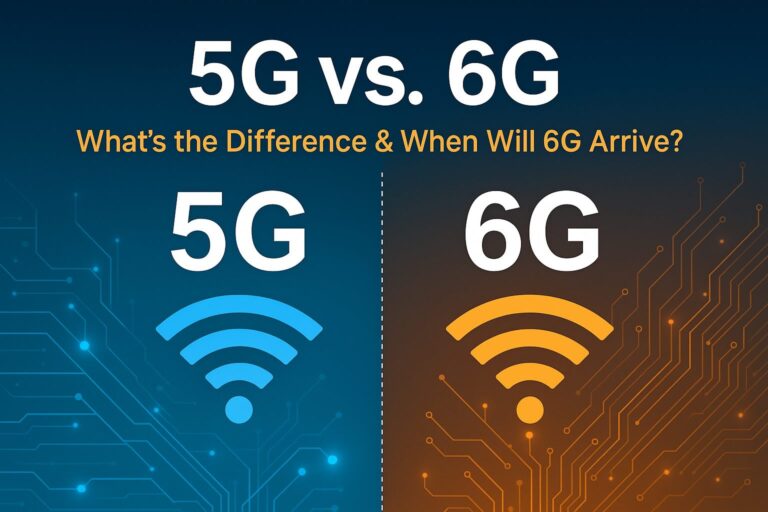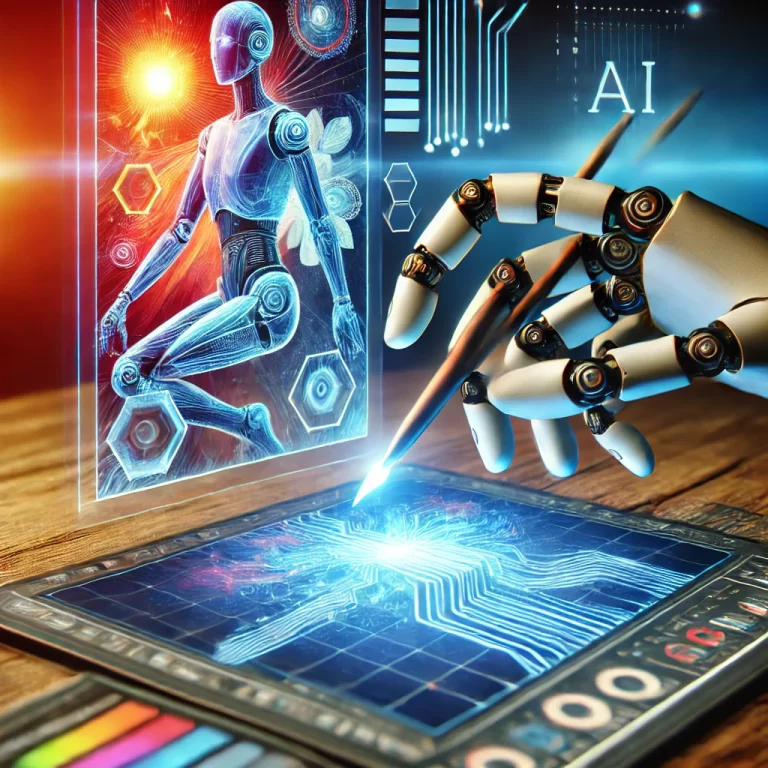The field of computing is undergoing a transformative shift with the advent of neuromorphic computing. Inspired by the neural architecture and functionality of the human brain, neuromorphic computing promises to revolutionize how computers process information, offering significant advancements in artificial intelligence (AI) and machine learning (ML). This article explores the concept of neuromorphic computing, its potential to transform information processing, and its profound implications for AI and ML.
Understanding Neuromorphic Computing
What is Neuromorphic Computing?
Neuromorphic computing is a multidisciplinary field that designs computer systems to emulate the neural structure and operation of the human brain. Unlike traditional von Neumann architecture, which separates memory and processing units, neuromorphic systems integrate these functions, enabling more efficient and parallel processing. This architecture mimics how neurons and synapses in the brain communicate and process information.
Key Components of Neuromorphic Systems
1. Artificial Neurons: These are electronic devices designed to replicate the function of biological neurons. They process and transmit information through electrical signals in a manner similar to neurons in the brain.
2. Artificial Synapses: These components emulate the connections between neurons, facilitating communication and learning by adjusting synaptic weights based on activity, akin to synaptic plasticity in biological systems.
3. Spiking Neural Networks (SNNs): Unlike traditional neural networks that use continuous values, SNNs process information through discrete spikes, reflecting the brain’s method of neural communication. This allows for more efficient and biologically plausible information processing.
Potential of Neuromorphic Computing
Energy Efficiency
One of the most significant advantages of neuromorphic computing is its energy efficiency. Traditional computing systems consume substantial power due to constant data movement between memory and processing units. Neuromorphic systems, with their integrated architecture, minimize data movement and operate on low-power spikes, making them significantly more energy-efficient. This efficiency is crucial for applications requiring prolonged operation, such as mobile devices and autonomous systems.
Parallel Processing
The brain’s ability to process vast amounts of information simultaneously is a key inspiration for neuromorphic computing. Neuromorphic systems leverage parallel processing capabilities, enabling them to handle multiple tasks concurrently. This parallelism is particularly beneficial for complex computations required in AI and ML, leading to faster and more efficient processing.
Adaptability and Learning
Neuromorphic systems are designed to learn and adapt over time, much like the human brain. Through mechanisms akin to synaptic plasticity, these systems can adjust synaptic weights based on experience, improving their performance in tasks such as pattern recognition and decision-making. This adaptability is a significant step forward for AI and ML, where learning from data is paramount.
Implications for Artificial Intelligence and Machine Learning
Enhanced AI Capabilities
Neuromorphic computing holds the potential to greatly enhance AI capabilities. Traditional AI algorithms often require vast computational resources and energy, limiting their scalability. Neuromorphic systems, with their efficient and parallel processing, can support more sophisticated AI models, enabling real-time processing and decision-making in resource-constrained environments.
Advanced Machine Learning Techniques
Machine learning, particularly deep learning, relies on large neural networks and substantial computational power. Neuromorphic computing can optimize these processes through SNNs, which are more efficient in handling complex tasks such as image and speech recognition. The ability to process information in a manner similar to the brain allows for more nuanced and robust learning algorithms.
Real-World Applications
Neuromorphic computing can drive advancements in various real-world applications, including:
1. Autonomous Vehicles: Enhanced real-time processing and decision-making capabilities can improve the safety and efficiency of autonomous driving systems.
2. Robotics: Robots with neuromorphic processors can better interact with and adapt to their environments, performing complex tasks with greater autonomy.
3. Healthcare: Neuromorphic systems can support advanced diagnostics and personalized medicine by processing vast amounts of medical data efficiently.
4. Smart Devices: Energy-efficient neuromorphic processors can enable smarter and more responsive IoT devices.
Case Studies and Real-Life Applications
Case Study 1: IBM TrueNorth
IBM’s TrueNorth chip is a pioneering example of neuromorphic computing. TrueNorth consists of 1 million programmable neurons and 256 million synapses. It has demonstrated remarkable efficiency in pattern recognition tasks, such as visual and auditory data processing, consuming significantly less power than traditional processors.
Case Study 2: Intel Loihi
Intel’s Loihi chip is another notable neuromorphic processor. Loihi features 128 neuromorphic cores, each containing 1,024 artificial neurons. It excels in real-time learning and adaptation, making it suitable for dynamic environments where continuous learning from sensory inputs is crucial.
Challenges and Future Directions
Technical Challenges
Despite its potential, neuromorphic computing faces several technical challenges:
1. Hardware Development: Designing and manufacturing neuromorphic hardware that accurately mimics neural processes is complex and requires advanced materials and fabrication techniques.
2. Scalability: Scaling neuromorphic systems to handle large-scale applications remains a significant hurdle.
3. Software Integration: Developing software that can fully leverage the capabilities of neuromorphic hardware is an ongoing challenge.
Research and Development
Continued research and development are critical for overcoming these challenges. Collaborative efforts between academia, industry, and government agencies are essential to advancing neuromorphic technology. Initiatives such as the Human Brain Project and the development of neuromorphic chips like IBM’s TrueNorth and Intel’s Loihi are promising steps forward.
Ethical Considerations
As neuromorphic computing advances, ethical considerations must be addressed. The ability of these systems to learn and adapt raises questions about accountability, transparency, and the potential impact on employment. Ensuring that neuromorphic technologies are developed and deployed responsibly is crucial.
The Future of Neuromorphic Computing
Hybrid Computing Models
The future of computing may involve hybrid models that combine traditional computing with neuromorphic systems. This approach can leverage the strengths of both architectures, optimizing performance for a wide range of applications.
Advancements in Neuromorphic Hardware
Ongoing advancements in materials science and nanotechnology are expected to drive the development of more sophisticated neuromorphic hardware. Innovations such as memristors and advanced nanowire technologies hold promise for creating more efficient and powerful neuromorphic processors.
Integration with Quantum Computing
There is potential for integrating neuromorphic computing with quantum computing, further enhancing computational capabilities. Quantum computing’s ability to perform complex calculations at unprecedented speeds could complement the brain-like processing of neuromorphic systems, opening new frontiers in AI and ML.
Broader Applications
As neuromorphic technology matures, its applications will likely expand beyond current use cases. Fields such as finance, cybersecurity, and environmental monitoring could benefit from the unique capabilities of neuromorphic systems, leading to more efficient and intelligent solutions.
Conclusion
The rise of neuromorphic computing marks a pivotal moment in the evolution of information processing. By emulating the brain’s structure and function, neuromorphic systems offer significant advantages in energy efficiency, parallel processing, and adaptability. These capabilities hold the potential to revolutionize AI and ML, driving advancements in various real-world applications. While challenges remain, continued research and development promise to unlock the full potential of this groundbreaking technology. As we move forward, it is essential to address both the technical and ethical implications, ensuring that neuromorphic computing contributes positively to the future of computing and society as a whole.
The journey of neuromorphic computing is just beginning, and its impact on the future of technology promises to be profound and far-reaching. The integration of brain-inspired computing with AI and ML could lead to unprecedented innovations, fundamentally transforming how we interact with technology and the world around us.













Hey there, I came across your website and was impressed—great work!
Hey there, I came across your website and was impressed—great work!
Hi,
We’re really interested in building a long-term business relationship with a company like yours. Could you please share your offerings and prices? Let’s connect on WhatsApp: +44 744 022 2905
Hi,
I hope you’re doing well!
I’m reaching out to see if you’d be open to a link exchange with us. I’d be happy to write a feature article about your business and include a backlink to your site (futuristicgeeks.com) from one of our company websites. In return, we kindly ask that you link back to us from any page of your site on futuristicgeeks.com.
Let me know if this sounds like something you’d be interested in — I’d love to explore the possibility with you.
Looking forward to your reply
!
Warm regards,
Choy
Hi Choy,
Thanks for reaching out and for your interest in FuturisticGeeks!
Could you please share the domain or website where the backlink would be placed, as well as a bit more about the content or article you plan to feature us in? We’d like to ensure it’s a good fit for our audience and aligns with our brand values before moving forward.
Looking forward to hearing more.
Best,
Futuristicgeeks
Hi everyone,
Keeping your audience informed is key—let’s help you do that.
We’re currently running a campaign of free articles on digital marketing, web trends, and tech, but we’re happy to adjust topics to best fit your current content.
Would you be open to discussing this?
Let me know, thanks!
Sophia